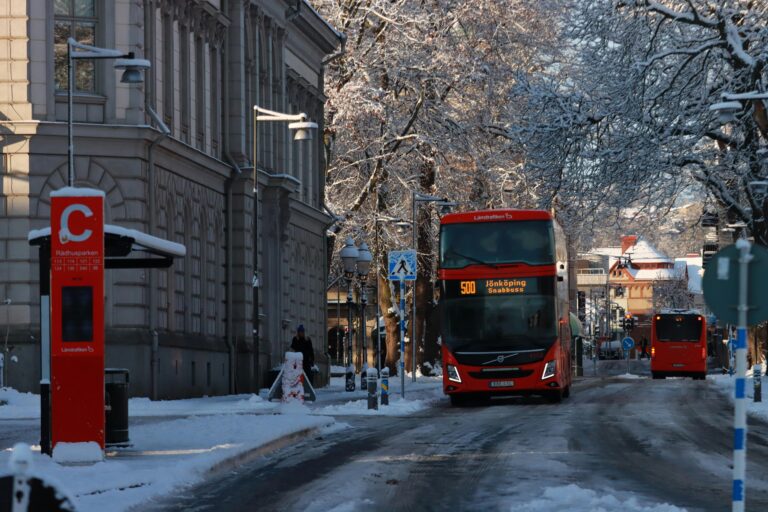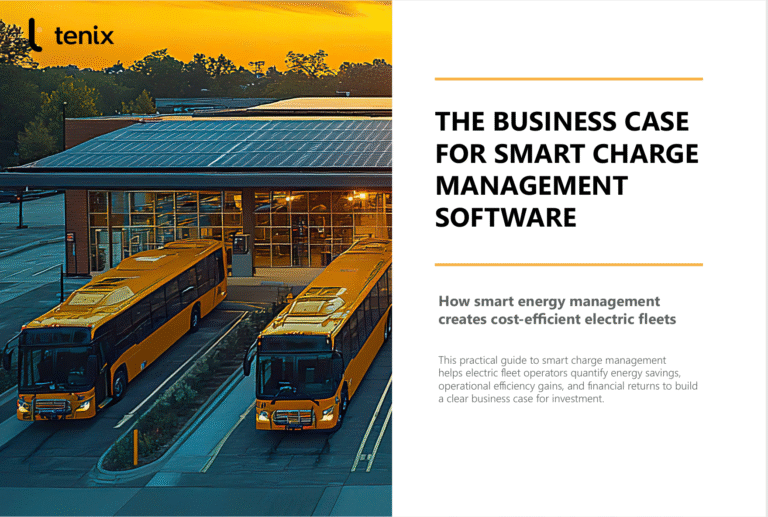The shift to electric buses and trucks is accelerating across Europe as operators work to cut emissions and meet stricter climate targets. Yet electrification is not as simple as replacing diesel buses with battery powered ones. It requires a new way of managing vehicles, depots, and energy systems.
From route planning and charging to maintenance and training, electric fleets operate differently. The good news is that with the right digital tools and data-driven strategies, these challenges can be solved efficiently. In this article, we explore the ways Tenix helps operators make the transition to electric smoother and more sustainable.
1. Range and Performance
Electric buses and trucks typically have a shorter range than diesel vehicles, especially on hilly routes or in cold climates where heating and auxiliary systems increase energy use.
Tenix Fleet gives operators a complete overview of each vehicle’s real-world performance. By analysing route data, load weight, temperature, and driving patterns, operators can plan daily schedules with precision and optimise where and when charging occurs.
In Norway, Tenix customers running long regional routes use live range and energy data to dynamically adjust charging plans, ensuring every bus completes its shift without unnecessary downtime. This data-driven planning eliminates range anxiety and keeps vehicles on the road.
2. Charging and Energy Management
For electric fleets, charging is both the biggest opportunity and the biggest operational challenge. Infrastructure must be reliable, coordinated, and cost-efficient.
Tenix Charge provides complete control of charging operations, combining real-time monitoring with smart scheduling. Operators can plan charging during off-peak hours when energy is cheaper, reducing costs by up to 30 percent. They can also prioritise vehicles that need to depart first and balance energy use to prevent overloading the grid.
A fleet of 200 buses can draw more than 10 MWh each night. Without coordination, that demand can create grid strain or penalty costs. Tenix automates load balancing across chargers, ensuring power is distributed efficiently and every vehicle is ready for service.
To learn more about how smart charging supports grid stability, see the International Energy Agency’s analysis of EV charging trends.
3. Operations and Maintenance
Electric vehicles have fewer moving parts but still require disciplined maintenance and access to the right components. The challenge for operators is ensuring uptime while adapting to new maintenance routines and battery health considerations.
Tenix Maintenance gives fleet managers a single digital workspace to plan and track maintenance tasks, manage spare parts, and schedule service around charging availability. The platform alerts technicians to early signs of degradation in key components, including high-voltage systems, which can help avoid costly breakdowns.
In one Nordic city, Tenix users reduced unplanned maintenance incidents by 25 percent by combining real-time vehicle data with predictive alerts from the platform. This level of visibility helps fleets move from reactive repairs to proactive planning.
4. People and Processes
Electrification affects more than vehicles. It changes how drivers operate, how mechanics work, and how planners schedule services. Retraining and operational clarity are essential.
Tenix supports operators by providing data-based insights that make these transitions tangible. Drivers can see vehicle readiness, charging progress, and range estimates directly in their dashboard systems. Maintenance teams receive step-by-step data on charging cycles and component wear, improving safety and decision-making.
Some Tenix partners also use the platform to inform internal training, using live depot data to demonstrate how small changes in behaviour, such as reduced idling or smoother acceleration, can improve battery efficiency and extend range.
5. Cost and Investment Management
The upfront cost of electric buses and trucks remains higher than diesel, but the long-term benefits are significant. According to the International Council on Clean Transportation (ICCT), battery-electric buses produce at least 63 percent lower lifetime greenhouse gas emissions compared to diesel models, even with today’s electricity mix.
Through Tenix’s data-driven tools, operators can model total cost of ownership, track real energy savings, and quantify emissions reductions. This turns sustainability goals into measurable results that support investment decisions and funding applications.
6. Route Planning and Depot Coordination
Efficient electric operations depend on well-coordinated routes and depots. Charging, parking, and departure schedules must work together to prevent congestion and delays.
Tenix integrates route planning with depot operations so managers can visualise every vehicle’s location, charging status, and planned departure. The system ensures that vehicles are parked near available chargers and that charging sessions are automatically adjusted based on real-time conditions such as grid load or delayed arrivals.
In Oslo, where bus depots operate at high density, this kind of smart coordination has helped reduce average departure delays by more than 40 percent, proving that intelligent planning pays off in daily reliability.
A Greener Future, Powered by Better Data
Transitioning to electric fleets comes with challenges, but it also opens the door to smarter, cleaner, and more efficient transport systems. With Tenix Fleet, Tenix Charge, and Tenix Maintenance, operators gain complete visibility of vehicles, chargers, and energy use.
The result is not only lower emissions and quieter streets, but also more predictable costs and higher reliability. In cities that have already transitioned, electric buses have cut traffic noise by an average of 4 decibels during daytime service, improving the quality of life for residents.
Tenix helps operators turn electrification into a competitive advantage by giving them the data and tools to plan, optimise, and scale with confidence.




